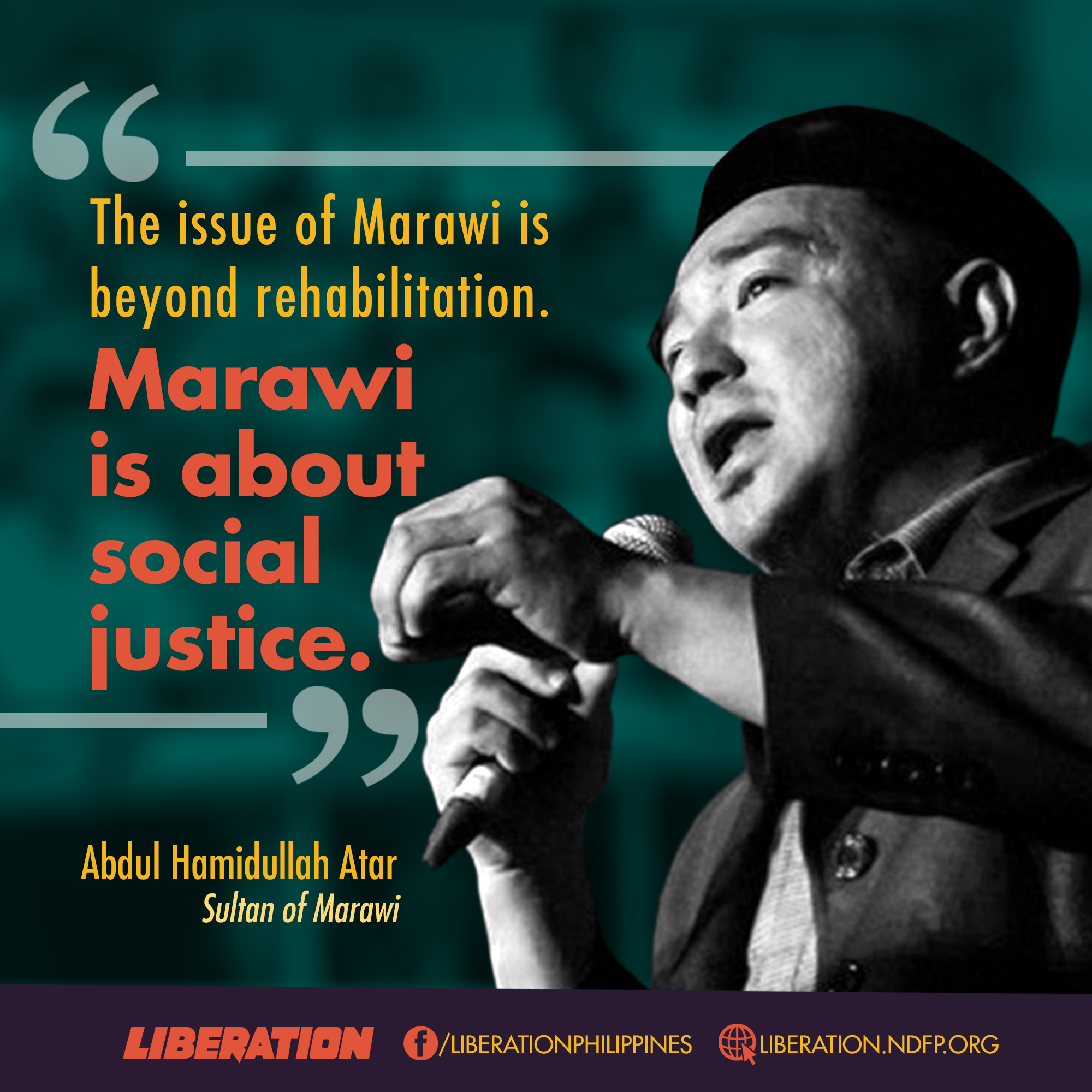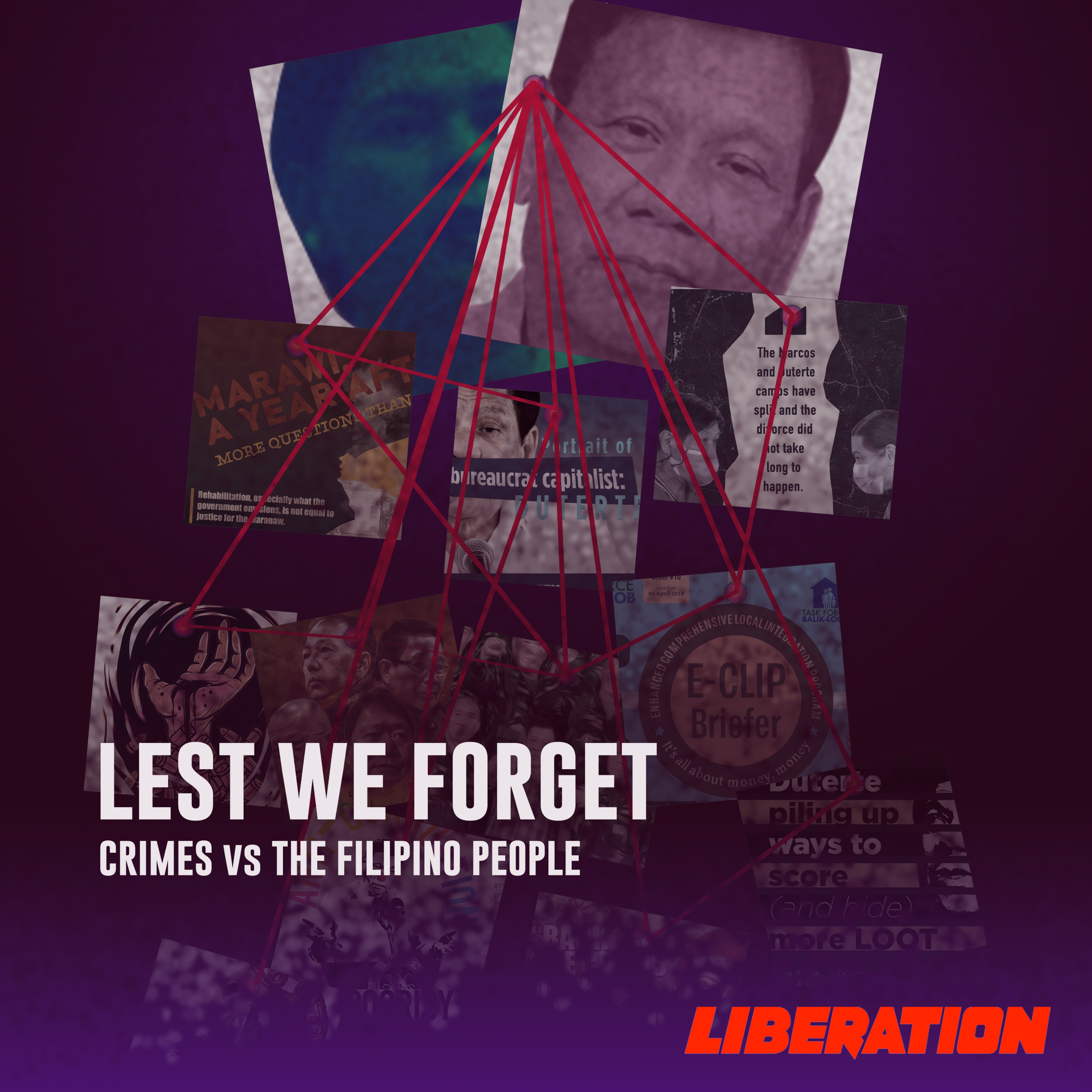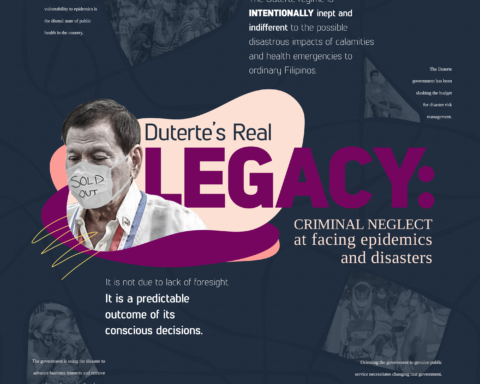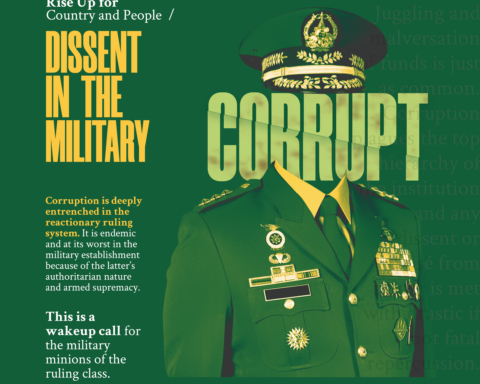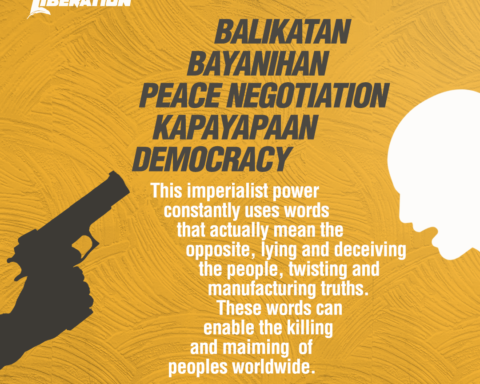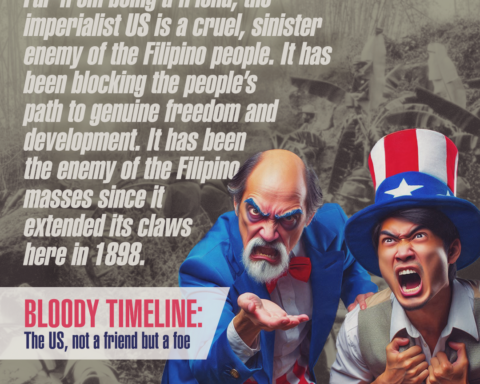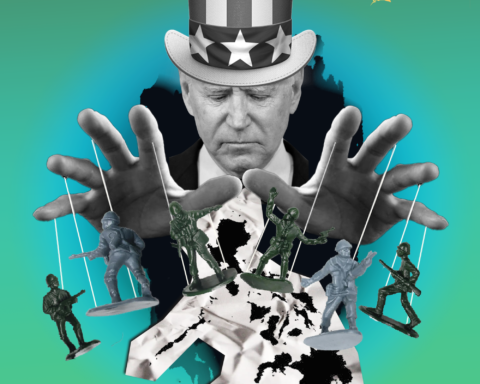by Iliya Makalipay It was heartbreaking and enraging to witness how the Armed Forces of the Philippines and the Philippine National Police, wielding their shields, pushed back and shoved the Maranao people to prevent them from going back to Marawi City. It was as if they were the invaders in their own ancestral land and territory.
More than a year after the siege, the Maranaos attempted to go back home—to see what remain of their abodes and properties, and their places of worship. It was painful and surreal to see how they bellowed and begged to be allowed to go back home.
Two years in a row, they had to observe the Ramadhan in evacuation centers or in the homes of relatives and friends, away from their Mosques and the Lanao Lake, both integral to their worship. Despite government press releases saying that Marawi has been cleared of terrorists and is ready to be rebuilt, what we see are still the displaced Maranaos and the rubble that is the Islamic City of Marawi.
“We were displaced because of the siege and the airstrikes; we continue to be displaced because of the rehabilitation project,” one of the evacuees lamented in a broadcast interview.
TRADITIONAL SYSTEMS, PROCESSES, CULTURE, AND RELIGIOUS BELIEF ALL DISRESPECTED
Less than a month after the May 23, 2017 siege, about 50 traditional and religious leaders in Marawi City requested the AFP Brigade commander to allow them to negotiate with the members of the Daulah Islamiyah (DI). It was an attempt to end the hostilities and avoid further loss of lives and destruction of properties. But the commanding officer refused, saying Malacanang had already opted for a military solution.
“We were not given the opportunity to exercise our traditional means of settling disputes and our right to self-governance,” commented Marawi Sultan Abdul Hamidullah T. Atar, in an emailed interview with Liberation. Marawi, he pointed out, is the only place in the country with a homogenous Muslim population of mostly Maranao, the “people of the lake”.
“We have relatives and clan members in the Daulah Islamiyah. In a way, we are all related, by blood or by affinity, and our leaders could have talked to them,” he explained, adding: “It could have been less disastrous and damaging had these traditional processes were alowed to function.” The Duterte regime, however, had closed all avenues for negotiations.
The consequences of the government’s option: the daily airstrikes, bombings and mortar shellings along with ground assaults wiped out the only Islamic city in the country; it also economically and physically dislocated the Maranao people. The exact number of evacuees, which remains undetermined up to now, ranged from 200,000 to 300,000.
Of the more than 11,000 houses destroyed, at least 37 prayer Mosques were ruined along with several treasured traditional houses. To the non-Muslims, these are equivalent to the destruction of churches, cathedrals, and heritage houses. These were not mere structures; they had been the expressions of the faith, religion, politics, and culture of the Maranao people—their very identity.
“The government said the airstrikes were resorted to out of necessity. But the same government now says it cannot support the rebuilding of our Mosques because of the separation of Church and State,” lamented Sultan Atar.
VIOLATIONS OF HUMAN RIGHTS AND INTERNATIONAL HUMANITARIAN LAW
“Kung sinira ng Maute ang kusina namin, winasak naman ng AFP ang buong bahay namin” (The Maute group may have destroyed our kitchen but the AFP destroyed our whole house),” deplored Sultan Atar.
Sultan Atar decried the excessive use of firepower against the 300 members of the DI, with 8,000-10,000 foot soldiers deployed against them in 24 of the 96 barangays in Marawi City. Various testimonies from the residents attested to this fact. Despite the AFP’s limiting their access to the battle areas, journalists and photojournalists have amply documented for the public how Marawi City was reduced to rubble because of the aerial bombings and artillery strikes. An estimated 12,000 families or 60,000 individuals used to occupy the “main battleground”, later referred to as “ground zero”.
Much like the number of evacuees, the number of deaths during the five-month siege is inconclusive, especially on the side of the “militant” fighters and civilians. Like many of the residents’ testimonies, Sultan Atar is unconvinced that 918 “militants” were killed. “How many of them were children and elderly?” he asked.
News reports teemed with accounts detailing how, after the aerial bombings and howitzer strikes began, the evacuees left the elderly members of their families because they could not walk for long hours. “We didn’t think it would last this long,” explained the Sultan.
Thus, when Marawi was “cleared of terrorists,” those outside of “ground zero” who were able to return home were appalled, but not surprised, to find the skeletons of their dead relatives. Up to now, no one knows the exact number of skeletons found. The situation has become more deplorable as it broke the Muslim practice of burying their dead within 24 hours.
Where skeletons were found, valuables were missing or destroyed.
Sultan Atar himself lost the engines of his vehicles but he refused to believe the claim of the military that it was the “extremists” who did these. Another Sultan, Saramay, saw his house only partially burned in October, the first time he was allowed inside Marawi. But when he went back in November, he found his whole house already razed to the ground.
The AFP asked the residents who had complained to present evidence to prove that soldiers were responsible for looting their destroyed houses. “That’s crazy. Were we in the area? Hinahanapan kami ng evidence ng violations, ng looting, ayaw nga kaming papasukin (They want us to provide evidence of the violations, of the looting when they won’t even allow us [in Marawi],” remarked Sultan Atar.
There are about 2,000 documented cases of violations of human rights and international law. “Pero ayaw muna i-public ng mga evacuees (The evacuees are hesitant to make these documents public) because they may be subjected to further harassments or for fear that they might be kicked out from the shelter,” he added.
EVACUATION, DISCRIMINATION
Wanting to set the record straight, Sultan Atar claimed the evacuees in government centers in Iligan City comprise only 20 percent of the total number of displaced Maranao. About 80 percent are home-based—those living in their relatives’ houses. “Our families and clans have been supporting us more than the government does,” he said.
The CNN-Philippines recently reported that the Commission on Audit (COA) has already flagged the Marawi City local government for its failure to disburse 74 percent or almost Php 30 Million (of the Php39M local donation) for aid, relief and services for the evacuees in 2017.
Groups involved in relief operations noted how women and children suffer most in evacuation centers as the centers are not gender and culture-sensitive. Women complained about the lack of privacy for bathing and changing clothes. It was also most difficult for pregnant women, who gave birth during the evacuation, to care for the newly born in over-crowded centers.
The daily worship and the observance of Ramadhan, for two years now, were disrupted. Muslims pray five times a day and follow the ritual of ablution before handling the Qur’an. That partly explains why most of the Mosques in Marawi were built around Lanao Lake. But they have been away from the lake for too long and there’s scarce supply of water in the evacuation centers.
One other thing appalled Sultan Atar: those among the displaced who sought to rent apartments in Iligan City were turned down by renters allegedly because “we came from Marawi and there’s the stigma of everyone being a terrorist.” The Marawi siege has definitely raised the level of discrimination against the Moro people by attaching to them the “ISIS” tag.
The question, however, is where will the evacuees go? The residents want to go back to Marawi now and reclaim their lands and their lives. All they ask from the government is to restore the supply of water and electricity and to rehabilitate the roads and drainage system. Sadly, there are no concrete plans for them. Based on the government’s rehabilitation plan, the evacuees will not be allowed back into their own homes, at least, until 2020.
Rehabilitation without the people
The government’s grandiose plan to “rehabilitate” Marawi is focused primarily on raising the necessary funds. This is no different from its “concern” on how to get more support for arms and ammunition to pulverize the members of the Daulah Islamiya,” wryly commented Sultan Atar.
Indeed, President Duterte has issued Administrative Order No. 3 creating the Task Force Bangon Marawi (TFBM), composed of various state line agencies, to manage the rehabilitation and rebuilding of Marawi City. Yet until now, neither the amount of the rehabilitation budget nor the source of funds has been settled.
From the initial Php 17-20 billion for two-three years, the proposed funding has now gone up to Php 62-72 billion, based on the recent budget submitted to Malacanang by Eduardo del Rosario, head of the Housing and Urban Development Coordinating Council, who chairs the Task Force. The Php 55B increase is supposed to cover the 76 other barangays outside “ground zero”.
In 2018, Php 10B has been allocated from the General Appropriations Act (GAA). Locally, some Php 3.5B will be drawn from the 2019 proposed budget of the National Disaster Risk Reduction and Management Fund (NDRRMF).
The Department of Finance (DoF) is now considering to float Php 40 billion worth of “Marawi bonds” for the period of five years, the target completion of the rehabilitation program. Finance Secretary Carlos Dominguez III has also talked about a pledging session among interested countries, with a special invitation to China.
Companies from China comprise the majority, along with four Filipino companies, in the Bangon Marawi Consortium, which is supposed to build the infrastructure. However, the start of construction has been delayed several times because none of the Chinese companies was able to raise the required capitalization.
Already, there is widespread fear among the Maranao people that they will never be able to set foot on their ancestral territory given the government’s unresolved scheme of acquiring funds for the rehabilitation.
While fundraising has been going on, the residents complained that there are no concrete plans for land use in the city, only proposals “to flatten the debris,” remarked Sultan Atar.
The construction of another military camp in the city likewise threatens the Maranao as well as the idea of building an export processing zone.
Residents through groups like Tindeg Ranao and the Ranao multi-sectoral groups have raised their opposition to the construction of the 10-hectare military camp. The construction is worth Php 400 million and is expected to be finished by 2020. Also Php 1.3B in the 2019 GAA will be allocated to the 55th Engineering Brigade of the Philippine Army, for rehabilitation and rebuilding its facilities in the city.
The Maranao people resent the Duterte government’s priority of building military camps and mass housing for policemen and soldiers. They also resent that during Duterte’s visits in Marawi he has never sought out the evacuees and has not even talked about their displacement, about the families who suffered casualties and deaths.
“The government failed to heed the people’s grievances. It failed to realize that Marawi is beyond the issue of rehabilitation, it is about healing and social justice,” emphasized Sultan Atar. His sentiments echo those of the majority of the Maranao who criticize the government for not considering their needs, not only in terms of housing, but their overall needs as a people, as Maranao.
“The major flaw in the plan to rehabilitate and rebuild Marawi is not simply because there is no people’s participation but more importantly because it is pursued without the people in the picture,” said Sultan Atar. “We grew old thinking that we can pass on our lands to our children. I didn’t know that one day, I’ll wake up and it is no longer ours,” he bemoaned.
HISTORICAL INJUSTICE
Resentment is widespread among the Maranao people as days, months, and years pass by without any clear indication of when and how they could regain and restart their lives.
With martial law in place and as “terrorist” tagging has become the norm, victims are generally silenced. The politicians, fearing reprisal and political backlash, have become passive. It didn’t help either that in all these, the Moro Islamic Liberation Front (MILF) chose not to say a word about Marawi and the Maranao, their fate could have been logically become part of the negotiation with the government.
“We have to break the silence so that those silenced by the martial law could speak up,” said Sultan Atar. And it would help if the majority of the Filipinos echo the sentiments of the Maranaw people. “Habang walang kumikibo sa karamihan sa atin, di magkakalakas loob na magsalita ang mga victims (Our voice would encourage the rest of the victims to speak up).”
But, Duterte’s derisive statements have ignited the sentiments of the Moro youth. Most of them feel hatred for the government. Maratabat, the Maranao pride, honor has been offended. It pains them that they—who have become victims, have been displaced and discriminated against—are now accused by the government of being terrorist coddlers, if not being terrorists themselves. It is a known fact that when maratabat is offended, revenge could not be far away.
When the airstrikes started, Moro leaders, including those in the local government, warned that the daily bombing was not the solution and it could only push the Maranao, especially the youth, to Islamist extremism. The same stands true to this day.
“Pag di ito na-address (when this is not addressed) and there is no accountability, no hope and no chance for justice, we will see a worsening of the situation,” warned Sultan Atar. But he would not also be surprised, he said, if a new group arises, one that is more legitimate than the MILF or the Moro National Liberation Front (MNLF).
For now, Sultan Atar could only hope for an end to martial law and for the government to allow an independent investigation on the real motives behind the siege, the extent of the human rights violations, the deaths, the damage, and destruction.
By now, it is clear that the Duterte regime’s solutions—from the siege to the evacuation on to the rehabilitation—is bereft of respect for the Maranao people’s religion and culture and of the recognition of their rights to self-determination and to their territories. It is a response that is far from Duterte’s vow to correct historical injustice. It is a case when solutions actually led to destruction and violations of the Maranao people’s rights.
